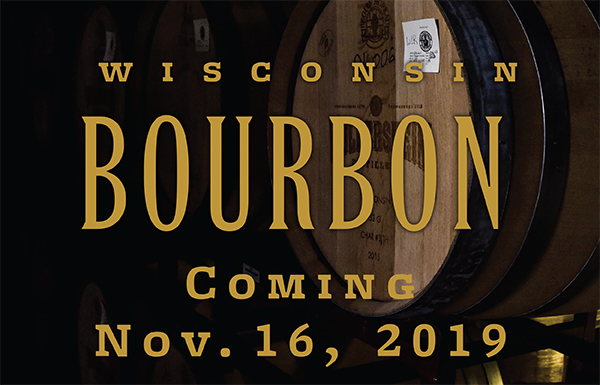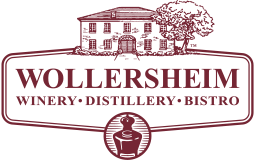In case you missed it, we released Part One of the Wollershiem Bourbon Blog back in August – click here to get caught up: If you’ve been there, read that — Part Two is here!
In this section, we are talking all about our Wisconsin Oak barrels and the effect they have on the spirits within them, particularly with our soon-to-be-released bourbon. So, with that being said, let’s get down to the hard(wood) facts.
As is the case with many aged spirits and whiskies, bourbon gets its inviting golden hue and a significant portion of its flavor from the oak barrels it is aged within. Bourbon, however, has a few specific guidelines that must be adhered to in order for the whiskey to be a classified a bourbon. One of those rules, among a few others, is that bourbon must be aged using new charred oak barrels, meaning they cannot be reused.
Since we first began distilling bourbon, we have used locally harvested Wisconsin oak trees, but in the summer of 2016 we went even further and began sourcing Wisconsin oak from the nearest barrel stave mill, located in Minnesota. It’s there our Wisconsin oak logs are cut into staves before being shipped back to Wollersheim where they are yard seasoned at the distillery in the year-round outdoor elements of Wisconsin.
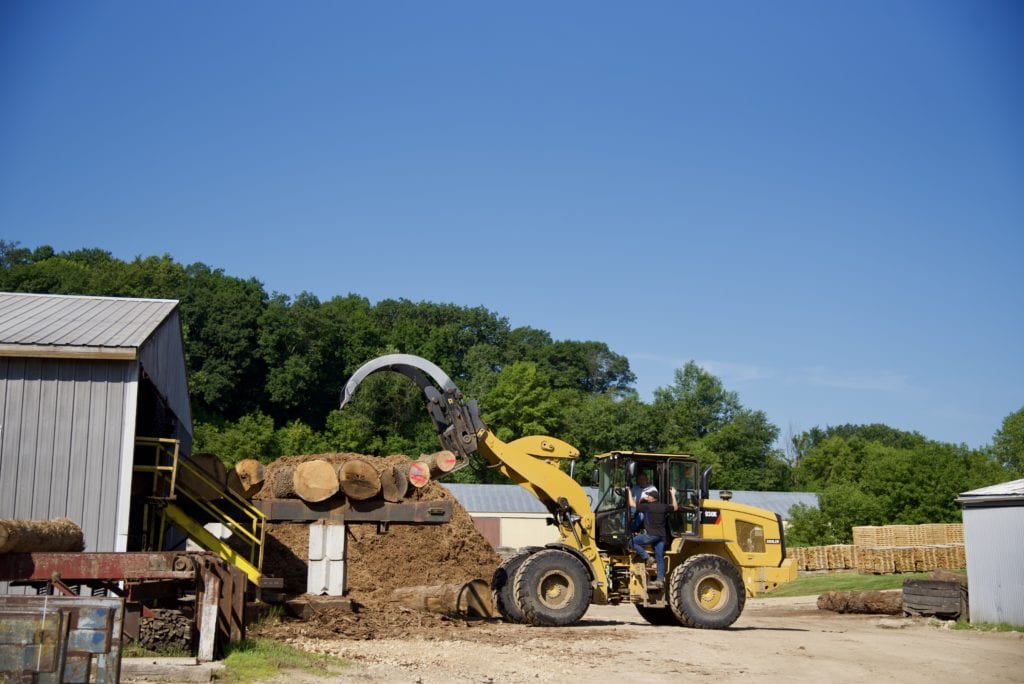
Wollersheims Wisconsin Oak logs being loaded into the stave mill.
This summer we took the process yet another step further and secured the logs from our friends at the Huber family farm, less than an hour drive from the distillery.
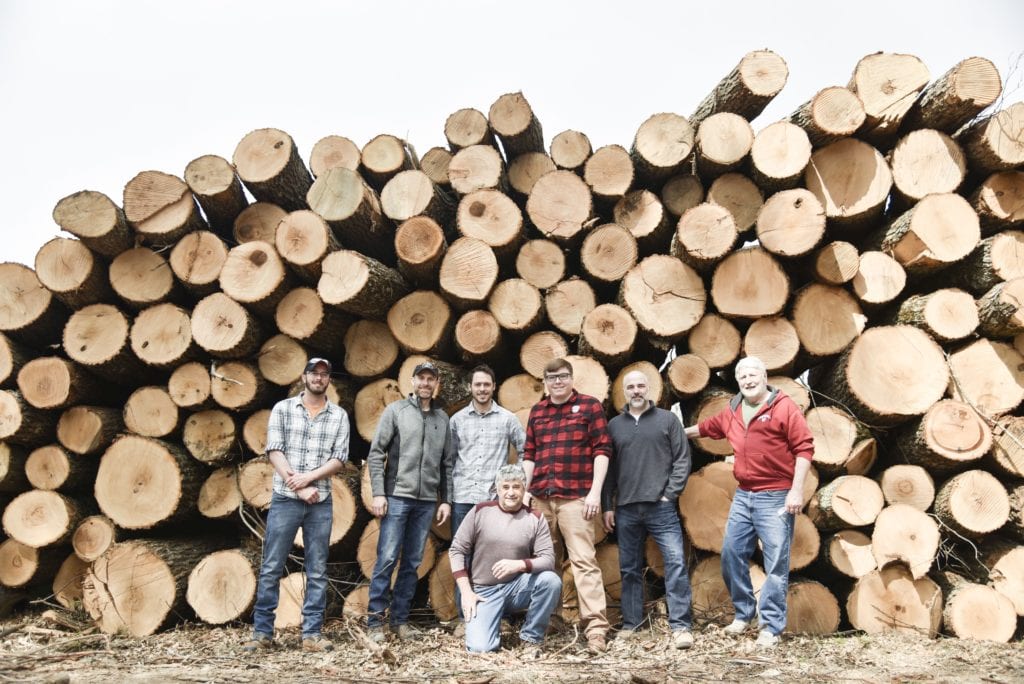
Huber Family Farm
Our experience with winemaking has shown the importance of properly seasoning oak for barrels. Seasoning leads to better flavor profiles by softening bitter and astringent tannins. As a result, we have chosen to only use oak that has been seasoned for at least 18 months for all of our barrels, but bourbon barrels get a minimum of two years in the yard.
For our Wisconsin Bourbon, the wood is yard seasoned on site because each place has its own unique microbes and environmental factors that have effects on the wood and the flavor compounds produced. Wood aged in California would have its own smell and taste, different from that of yard aged wood from Wisconsin.
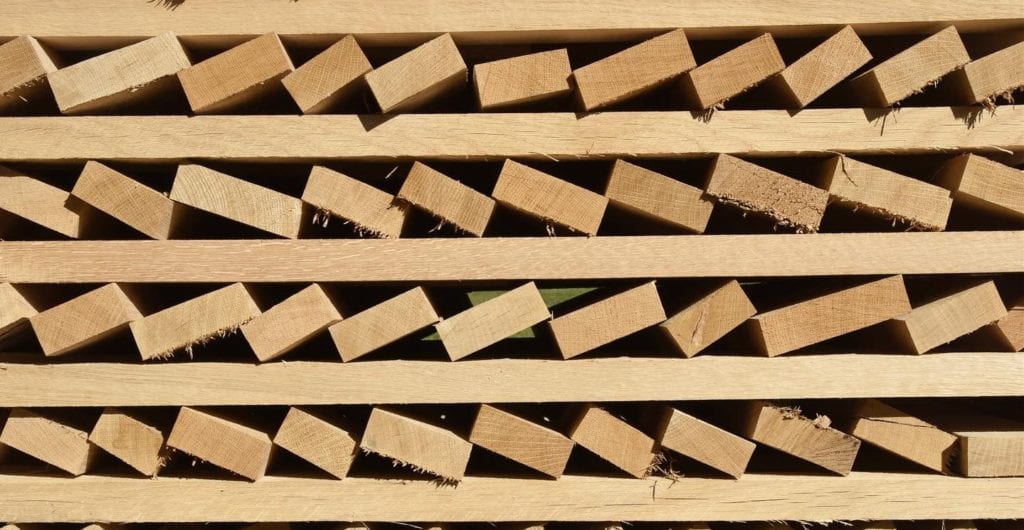
Fresh staves to be yard seasoned at Wollersheim.
Finally, after two years in the distillery yard, the staves are sent to the barrel cooperage to be made into barrels before they are sent back to Wollersheim to be filled with bourbon and stored for aging. In addition to the sourcing and seasoning, at the cooperage, we have them do an extra step for us that many bourbons don’t — we have our barrels toasted before they are charred.
Barrels are toasted at a lower heat and for a longer time than charring. This leaves the barrels dark brown on the inside, whereas charring barrels is more of a quick blast of high heat, which leaves the barrels blackened and charred on the inside. Doing both allows us to pull out the unique flavor compounds each process produces and leaves us with a deeper and more complex flavor.
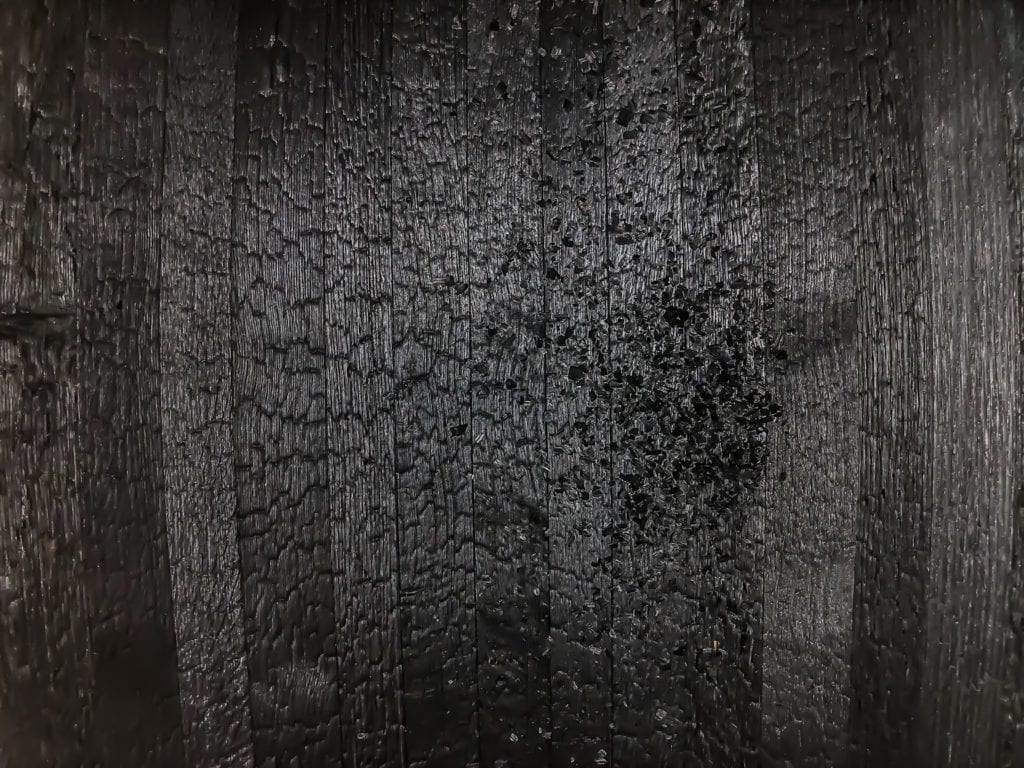
The inside of a charred oak barrel.
Lastly, because we put so much thought and effort into the wood the bourbon is aged inside of, we use a lower barrel entry proof to pull out more water-soluble flavor compounds within the wood than we would with a higher proof. This also allows us to use less water after aging and during the proofing process, which is gentler on the spirit and gives us an even more full flavor.
It’s not the easiest process, but we think it’s important to help us produce the best bourbon we can.
We can’t wait for you to taste the results on Nov. 16th, 2019.

